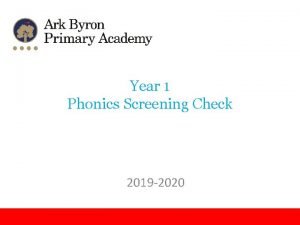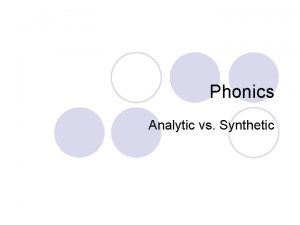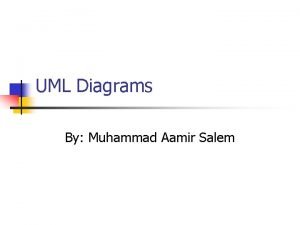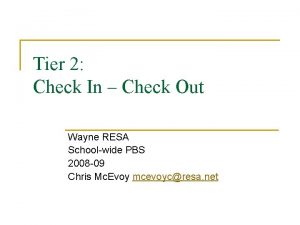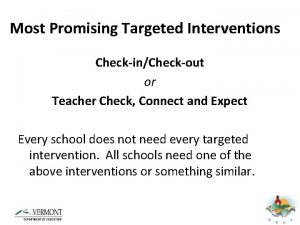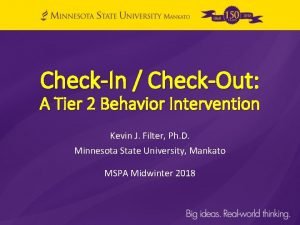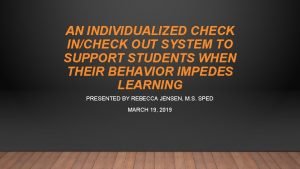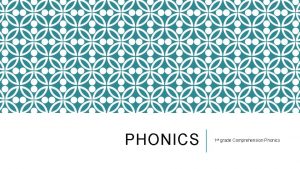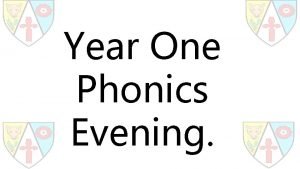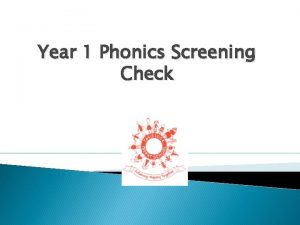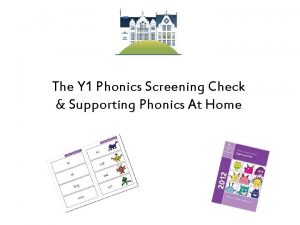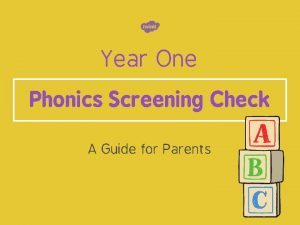Year Two Phonics Screening Check A Guide for








- Slides: 8

Year Two Phonics Screening Check A Guide for Parents

What is Phonics? Children begin to learn phonics (sounds) in early years, both nursery and reception. Once children begin learning sounds, these sounds are used orally to identify and make words. They will then begin to learn the letters which make each of the sounds and these are used to read and spell words. This is usually in Year 1. Once children begin learning sounds, these sounds are used orally to identify and make words. They will then begin to learn the letters which make each of the sounds and these are used to read and spell words. chapter menu next page

What is the Phonics Screening Check? Children in Year 1 throughout the country should have taken part in a phonics screening check in June. As schools were closed before the test date, Year 2 children will now be required to take the test in the second Autumn term. The phonics screening check is designed to confirm whether individual children have learnt phonic decoding and blending skills to an appropriate standard. If your child doesn’t pass the test in the Autumn term, they will re-take it in the Summer. chapter menu next page

What Happens During the Test? The test contains 40 words. Each child will sit one-to-one and read each word aloud to a teacher. The test will take approximately 10 minutes per child, although all children are different and will complete the check at their own pace. The list of words the children read is a combination of 20 real words and 20 pseudo words (nonsense words). chapter menu next page

Pseudo Words (Alien Words) The pseudo words will be shown to your child with a picture of an alien. This provides the children with a context for the pseudo word which is independent from any existing vocabulary they may have. Pseudo words are included because they will be new to all pupils; they do not favour children with a good vocabulary knowledge or visual memory of words. chapter menu next page

Reporting to Parents The results will be reported to parents by the end of 2020. They will also confirm if the child has met the standard threshold. Children who do not achieve the expected level will retake the test in the Summer term. chapter menu next page

How Are the Results Used? Results from the check will be used by schools to analyse their own performance and for Ofsted to use in inspections. chapter menu next page

How Can I Help My Child at Home? • Play lots of sound and listening games with your child. • Read as much as possible to and with your child. • Encourage and praise – get them to have a ‘good guess’. • If your child is struggling to decode a word, help them by encouraging them to say each sound in the word from left to right. • Blend the sounds by pointing to each one, e. g. /c/ in cat, /p/ in pat, /ng/ in sing, /ee/ in been. Next move your finger under the whole word as you say it. • Discuss the meaning of words if your child does not know what they have read. chapter menu • Use the resources on the phonics page on our school website. next page
